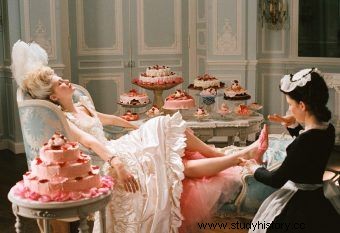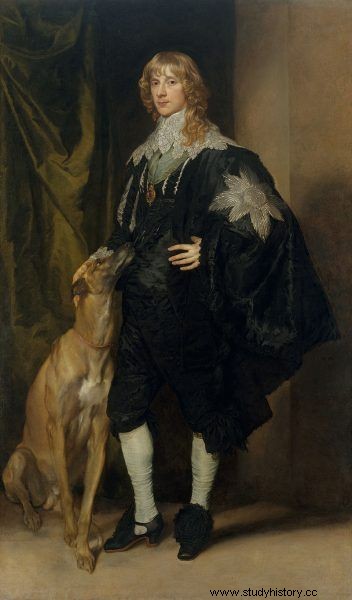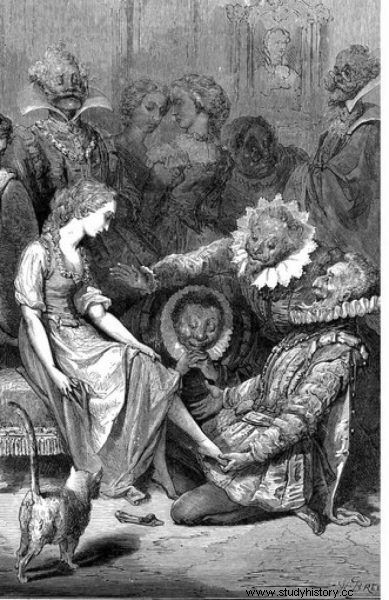In 1846, Queen Victoria launched an 18th-century costume ball. In order to meet the challenge, court stylists were forced to rush to search for the last living shoemakers dealing in the production of high wooden heels - it was an art that was so extinct. At the time of the popularity of flat shoes, it was probably not expected that in a few decades heels would return and conquer the footwear market again for almost 100 years.
It is worth remembering that the history of footwear has developed a bit differently than the fate of women's dresses. With the exception of a few extravagant models related to specific social classes or professions, the same style of the shoe was worn more than once for decades, and long skirts did not encourage experiments in this field. Footwear was often unisex, not to mention the lack of distinction between the left and right foot, which only changed in the second half of the 19th century . In short, shoe stores offering a diverse range of products are a relatively recent invention.

Still from the film "Marie Antoinette" by Sofia Coppola
Therefore, looking back, you usually cannot talk of high heels as an easily accessible alternative to fashionable flat shoes, or as footwear that - as in modern times - women wore for special occasions.
The very beginnings of high heels were strongly associated with men's wardrobe. One of the first mentions concerned heels, which were made especially for Persian horse warriors and were used to fix the leg better in the stirrup. Thanks to the heels, the soldiers could also lean on the stirrups and stand up to use their weapons more efficiently . This practical use of the heel has also made some penetration into Europe in the form of leather riding boots, used by both men and women.

James Stewart Duke of Lennox and Richmond
In Europe, the interest in heels was probably due to the influence of Eastern culture. In the 17th century, heels appeared in men's fashion, and women trying to adapt this trend were considered controversial and… masculine! The first heels were about five centimeters high, quite massive and often painted red with road paint, in line with the current fashion, which in France was limited only to the royal court. This is where the famous Louboutin stilettos with a red underside come to mind - hardly any celebrities feel like a 17th-century aristocrat wearing them!
The eighteenth century brought further development of both men's and women's heels, which also took on an unprecedented height. Large frames, the so-called batters, or corneas worn under dresses reflected the skirt at the legs and allowed here and there to blink a woman's foot, which in turn contributed to the increasing ornamentation of the shoes (such decorations were allowed by women in similar situations in the times of the fortress) . The heel, on the other hand, reduced the footprint of a woman's foot, suggesting that it is smaller than it really is - it is not without reason that the most famous version of the Cinderella fairy tale was written by Charles Perrault at the turn of the 17th and 18th centuries!

Gustave Doré - illustration for the fairy tale "Cinderella"
The first half of the 18th century was definitely the time of the undivided reign of high heels, at least when it comes to high fashion. Lower social classes definitely could not afford such an impractical garment as a high heel, although in cheaper footwear it appeared in a low version.
The closer to the end of the 18th century, the thinner and higher the heel in a woman's shoe. It reached its maximum height at the turn of the 1970s and 1980s, along with the short-lived fashion for dresses with shorter skirts completely revealing the feet; then it started to decline gradually, and finally disappeared completely for a few years at the beginning of the 19th century. Perhaps, like powdered hair, it was too much associated with fallen French aristocracy and old-fashioned ideas; flat shoes were also better suited to the healthy, active lifestyle that began to be promoted at the turn of the century. Or maybe the long skirts won again with heels? After all, it was not without reason that the heels returned again in the middle of the century, along with ... the racks worn under the dress. History likes to come full circle!
At the end of the 19th century, heels became such an integral part of women's wardrobe that flat shoes were usually worn only by young girls (with the exception of sports shoes). It is worth noting that only a few 19th-century models managed to reach the height of their 18th-century predecessors. At the beginning of the 20th century, such high heels were found in shoes that largely drew on patterns from over 100 years ago. "Louis-style" shoes referred to the rococo style not only with a higher heel, but also with pastel colors, rich embroidery and buckles . You could say that the vintage style reigned back then…

The article is an excerpt from the book "Fashion revolutions. The amazing history of our wardrobes ”,
The 20th century witnessed various experiments and a revolution in the field of women's heels - from the creation of a high heel in the 1950s to futuristic, avant-garde designs of the 1990s. combining heels with vanity and blindly following fashion is slowly becoming a thing of the past. We are also hotly debating whether heels have a place in men's fashion, since that is where they originally came from. It is interesting that the inconspicuous element of footwear can arouse so much controversy!
I am often nostalgic about browsing old catalogs of shoes, which - although perhaps less comfortable and adapted to the shape of the foot than modern ones - had some softness in the form. On the other hand, it is difficult to know how much it really looked like, because most of the models were presented in the drawings, just like the clothes ...
